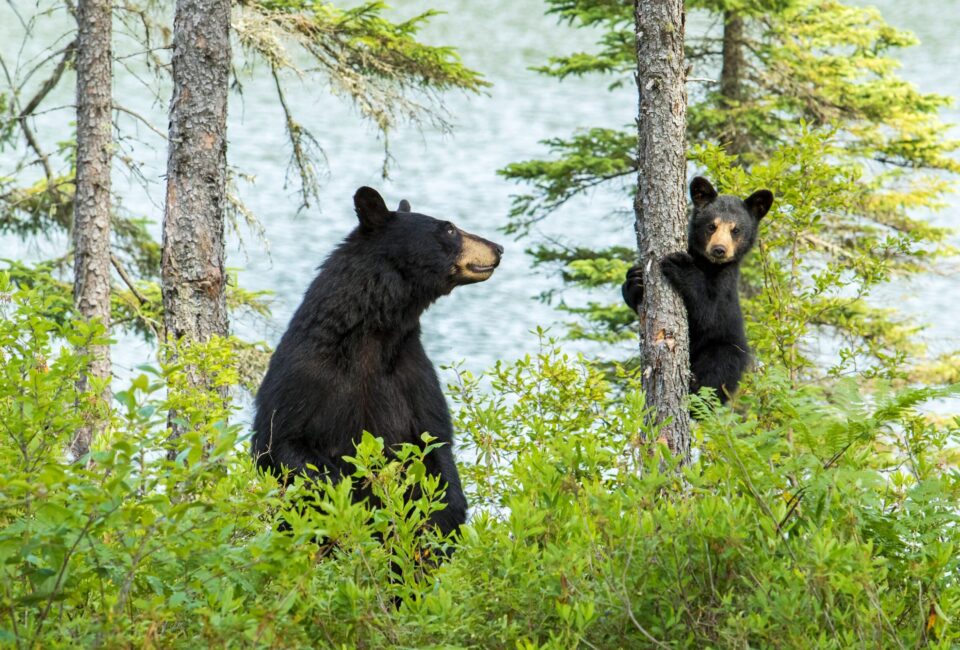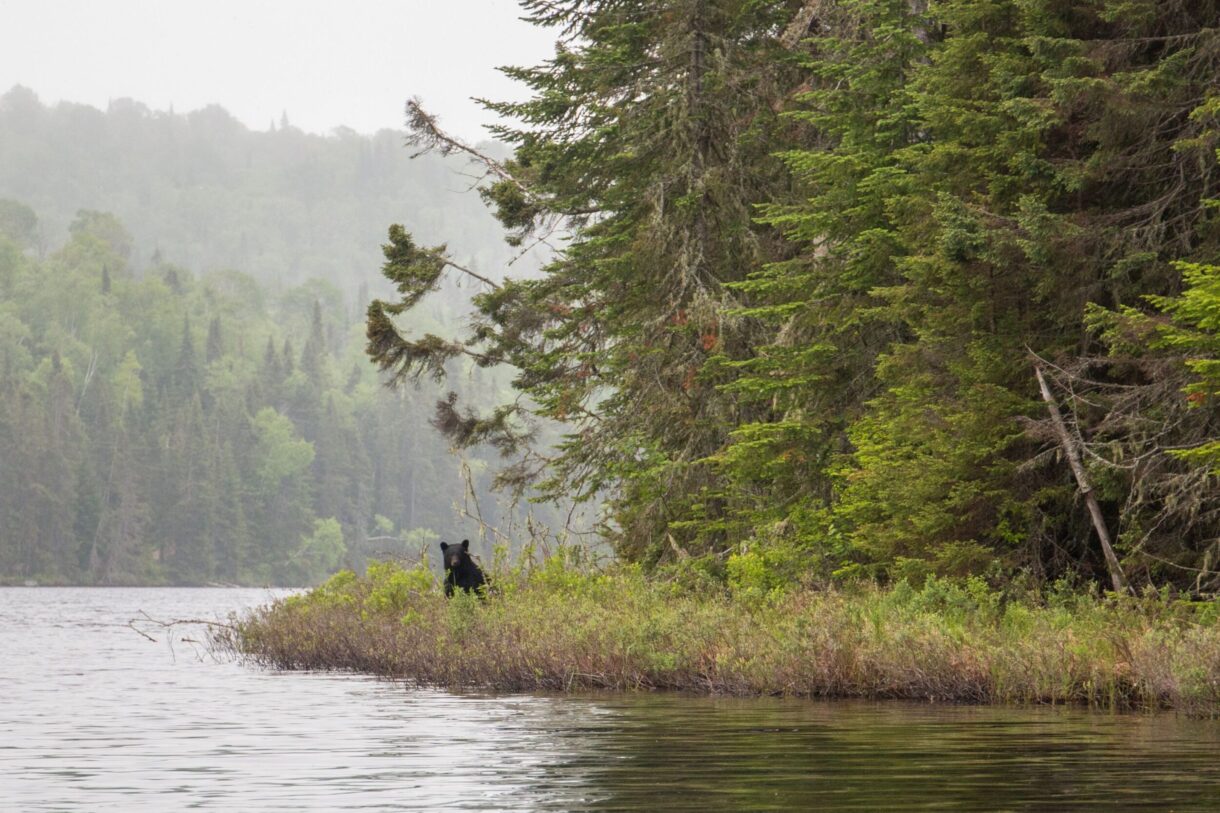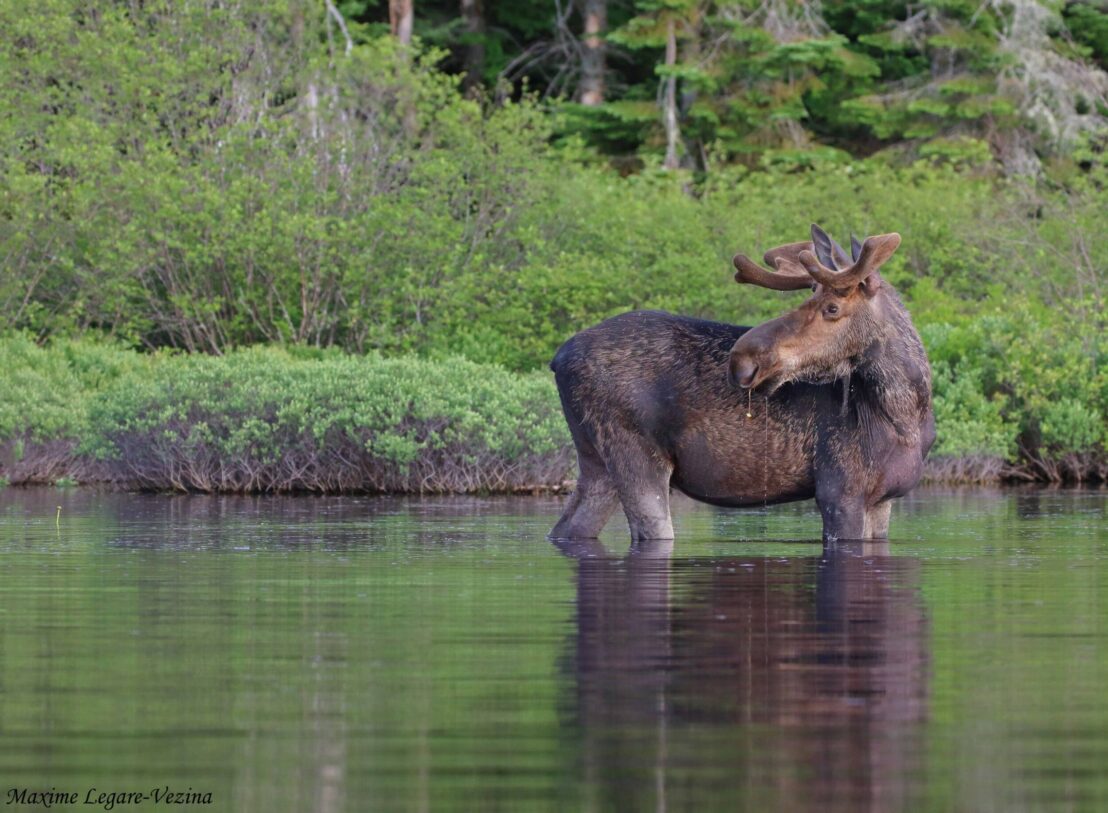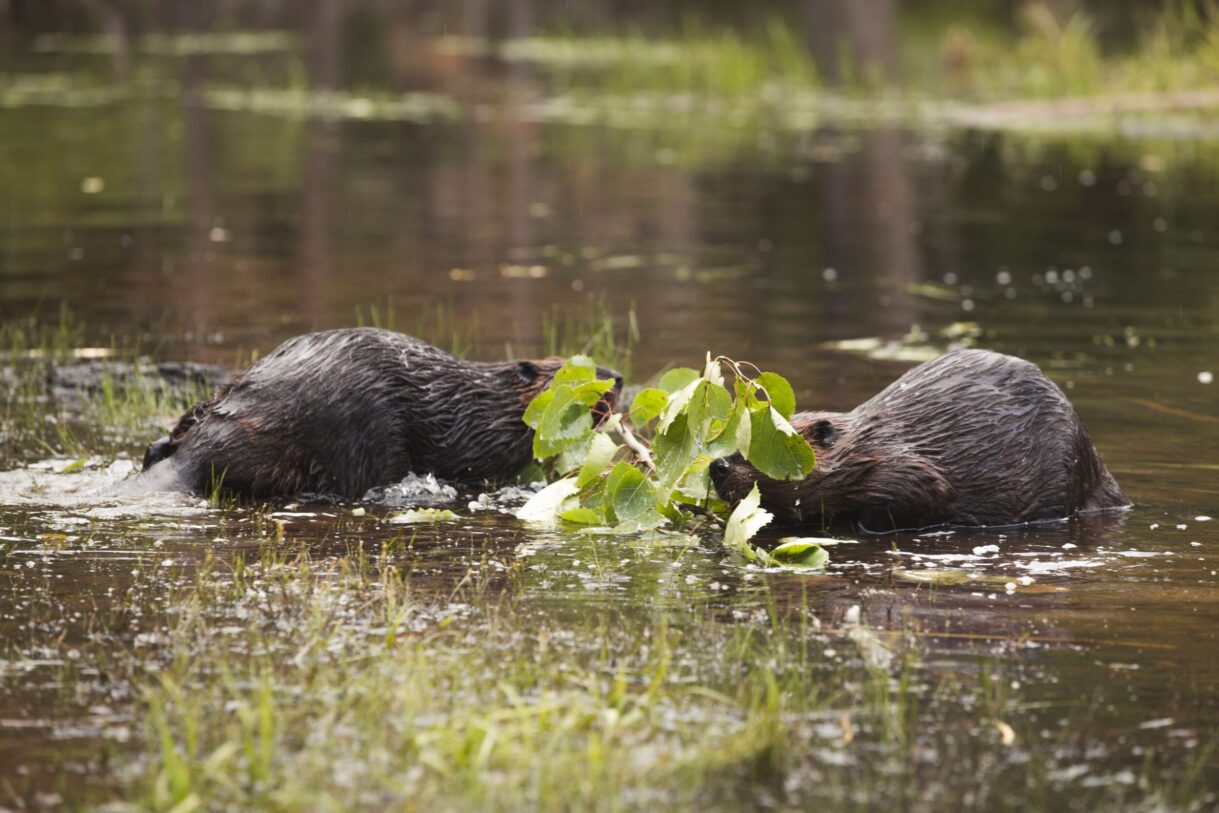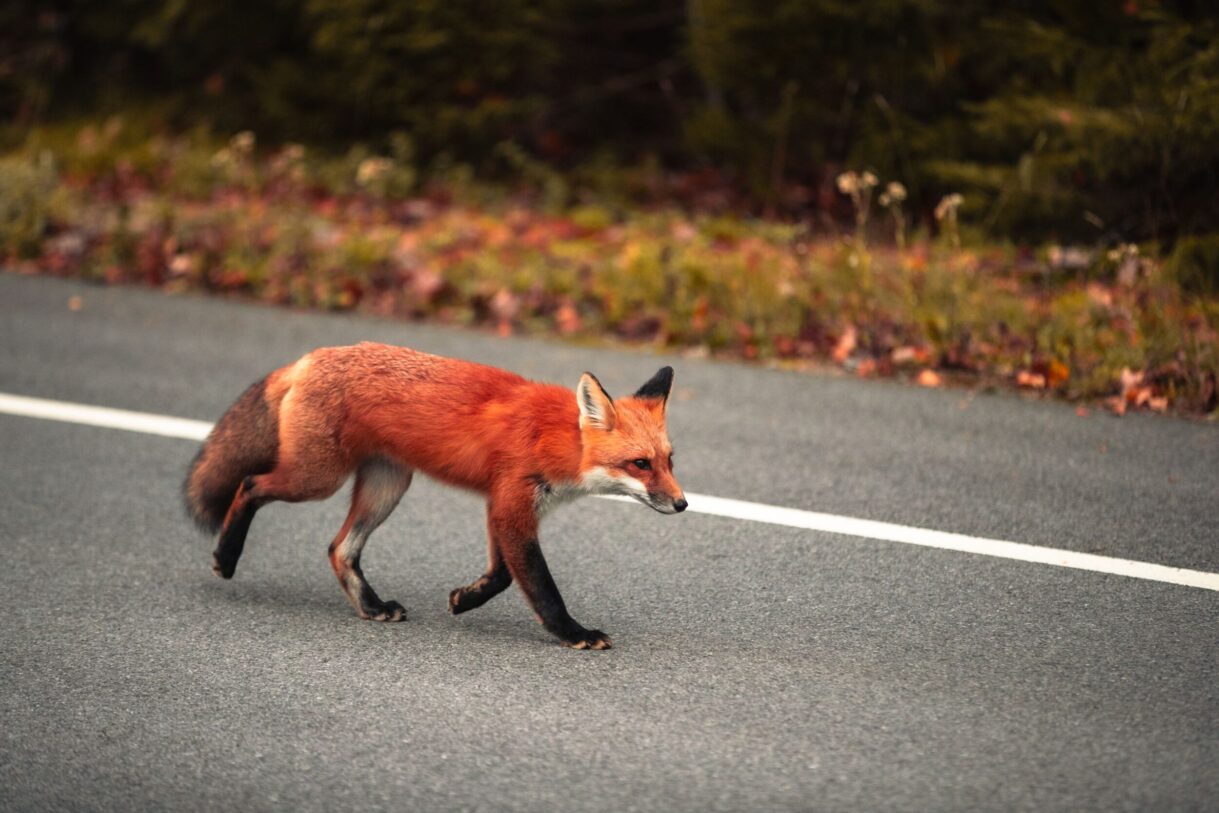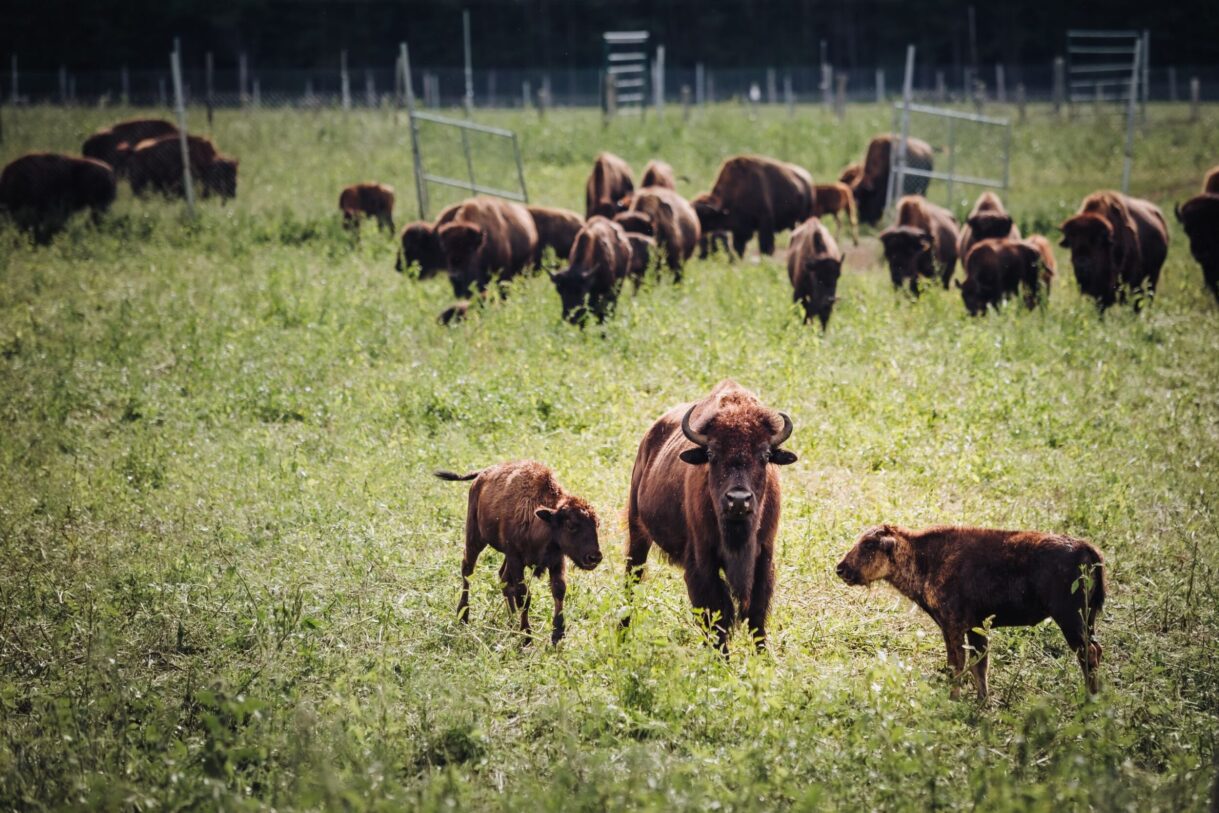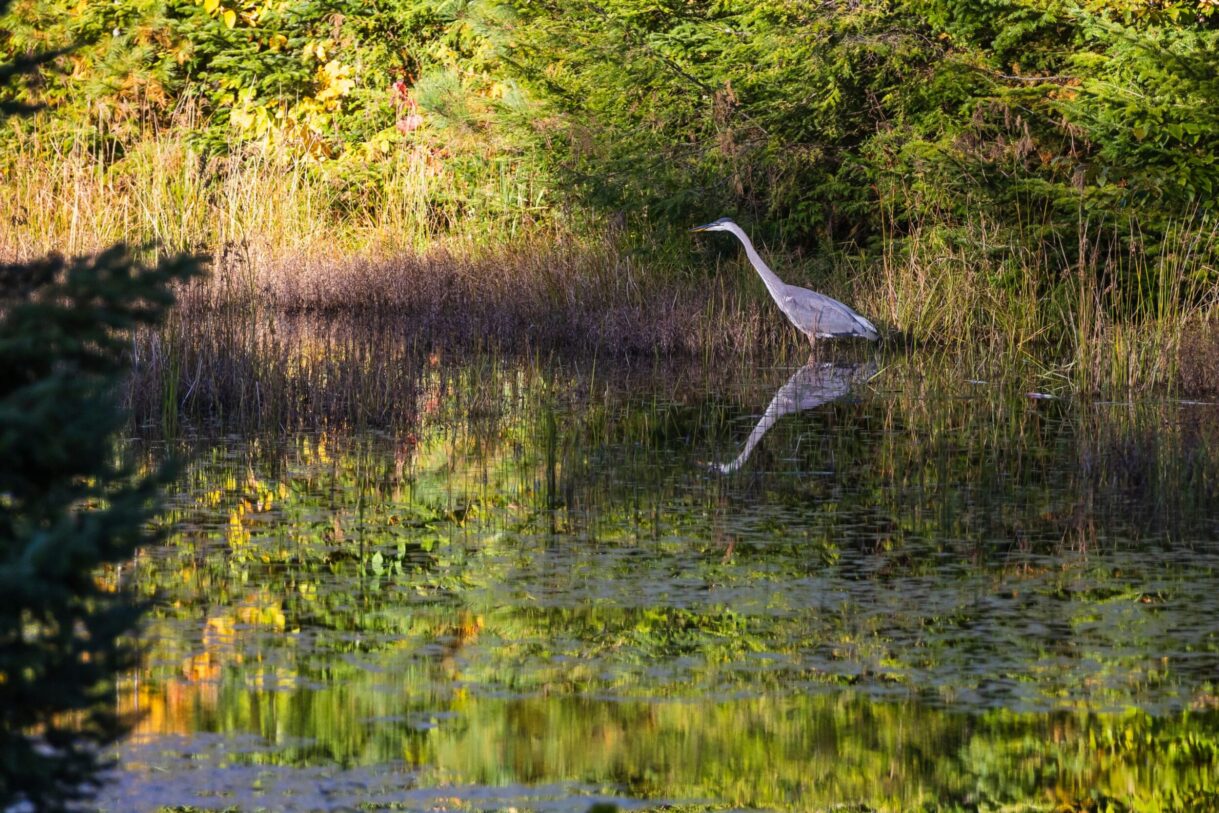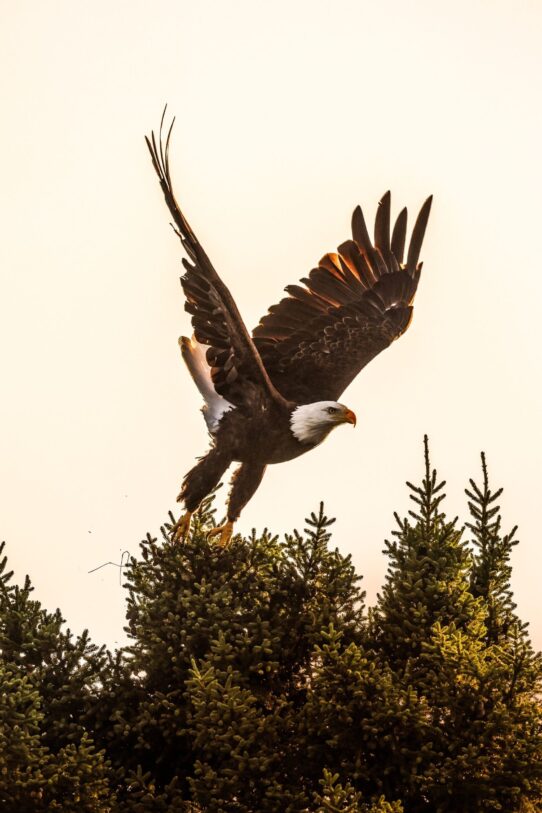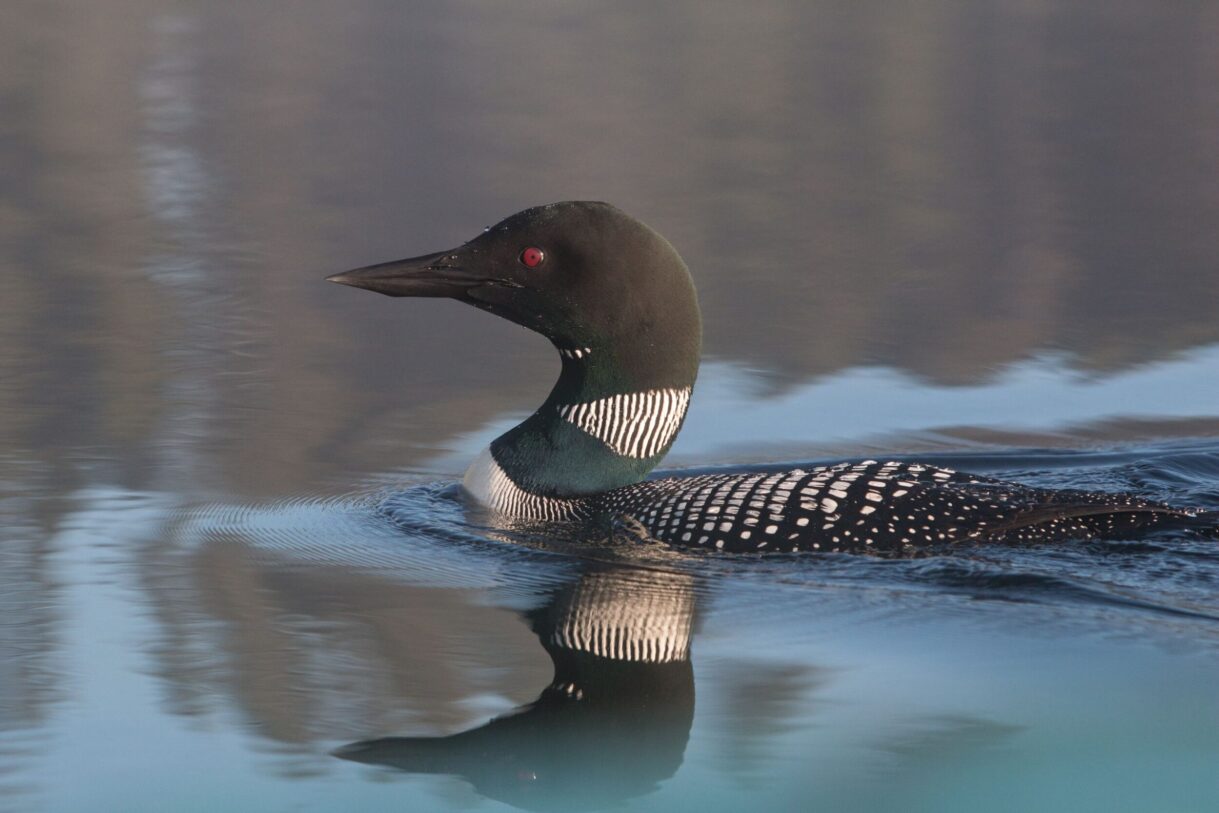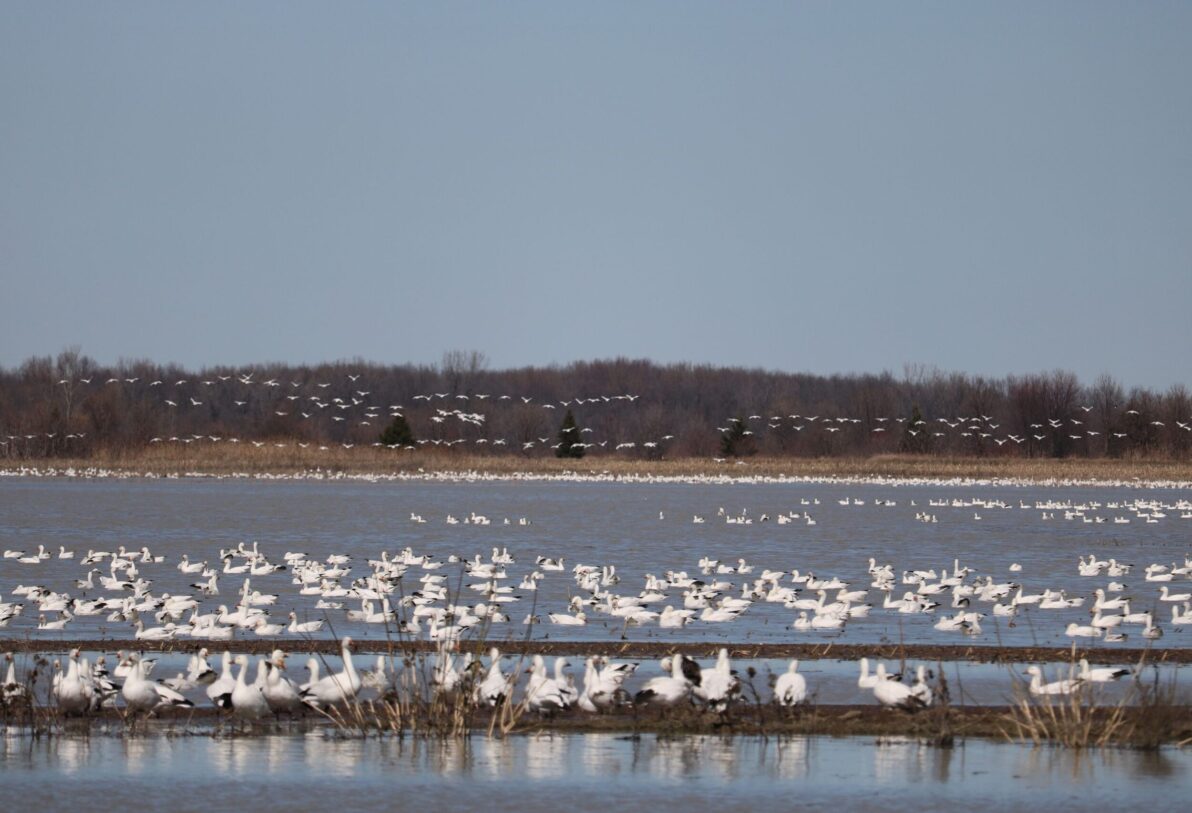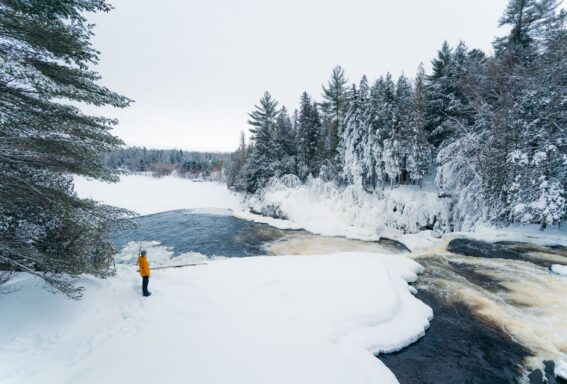From the majestic moose to the mysterious grey wolf, and not to forget the iconic beaver, Canada’s wildlife promises unforgettable encounters. On your next trip, you’ll have the chance to observe these iconic animals in their natural habitats.
With its wealth of animal species scattered across its immense territory, Canada offers unique opportunities for nature lovers. From the boreal forests to the ocean coasts and the St. Lawrence River, each region is home to its own diversity of fascinating species.
Our comprehensive guide takes you on an immersive journey to observe the country’s emblematic animals, learn about the best observation sites and times, and adopt the right reflexes to protect these species.
Canada’s Terrestrial Wildlife
The Beaver
A national symbol and North America’s largest rodent, the beaver is a master engineer. Its flat tail and webbed feet let it dive and construct impressive dams, creating wetlands essential for countless species.
At Pourvoirie du Lac Blanc Outfitter, join a guided dusk excursion to discover its wood-cut lodges.
The Black Bear
The most widespread of Canada’s ursids, the black bear sports a coat ranging from brown to black and can reach up to 2 m in length. Solitary and discreet, it emerges mainly at dawn and dusk to feed on berries, insects and small mammals.
You can also head to Pourvoirie du Lac Blanc Outfitter for black-bear viewing, accompanied by an experienced guide who’ll help you interpret its behaviour.
The Grizzly
Among North America’s most formidable mammals, the grizzly is identifiable by the distinctive hump on its shoulders and its massive claws. Adult males can weigh between 180 kg and 270 kg.
An opportunistic omnivore, it feeds on berries and roots as well as salmon during spawning periods. You’ll find grizzlies in Western Canada.
The Grey Wolf
The grey wolf reigns over Canada’s vast wilderness. Weighing up to 70 kg for males, this social predator is distinguished by its coat of varied hues, from grey to black to pure white.
Canada hosts the world’s second-largest grey-wolf population after Russia, where these carnivores are remarkably well adapted to diverse habitats: from arctic tundra and boreal forests to grasslands and mountainous areas. Sightings are rare, but several packs are protected in Parc National du Mont-Tremblant.
The Moose
With majestic antlers spanning up to 1.8 m, the moose is the largest member of the deer family. The best time to observe them is from June to October, especially in September during the mating season. Females, accompanied by their calves, frequent marshy areas rich in aquatic vegetation.
Come to La Mauricie National Park at dusk, particularly in the Lac du Fou sector, for a chance to make some excellent sightings.
The Elk
Banff National Park is home to a thriving elk population, particularly in the Bow River Valley. These majestic cervids gather in impressive herds at dawn, particularly between September and October during the mating season.
The Jasper meadows are another remarkable site for admiring these large mammals in their natural habitat.
The Caribou
The Gaspé caribou, the last herd south of the St. Lawrence, is a precious remnant of Canadian wildlife. Both males and females bear branching antlers, and this mountain-dwelling population moves between peaks and valleys with the seasons in search of food, notably lichen in winter.
To observe these endangered caribou, Parc national de la Gaspésie offers guided hikes on Mont Jacques-Cartier, where a small population lives on the alpine plateaus.
The Wolverine
Mysterious and elusive, the wolverine (or “glutton”) is one of Canada’s most fascinating mammals. This powerful predator, resembling a small, stocky bear, is famous for its remarkable strength, endurance and vast territory, which it defends fiercely. Its opportunistic diet includes everything from carcasses to small animals, enabling it to survive in the harshest climatic conditions.
Though difficult to observe because of its stealth, the best chances of spotting it are in the Yukon and Northwest Territories.
The Bison
The bison, symbol of the Canadian prairies, instantly evokes the country’s vast wilderness. Once almost extinct, the North American bison is now protected and successfully reintroduced in several regions. Weighing up to a ton, this peaceful giant travels in herds, feeding mainly on grasses and herbaceous plants.
Elk Island National Park in Alberta is the place to be if you want to meet these emblematic animals. If you’re in Quebec and dream of observing them, visit La Terre des Bisons in Rawdon, a big game interpretive centre with a bison and elk discovery trail.
The Polar Bear
Weighing up to 700 kg, the polar bear amazes with its power and perfect adaptation to extreme conditions, courtesy of its insulating white fur and thick layer of blubber.
Churchill, Manitoba, is known as the “Polar Bear Capital of the World.” The prime viewing window is mid-October to mid-November, when bears gather along Hudson Bay to await the return of the pack ice.
The Lynx
The Canada lynx, a discreet feline of the boreal forests, is distinguished by its triangular ears adorned with black tufts and its wide, snow-adapted paws.
This solitary hunter, weighing between 8 and 11 kg, is mainly seen in Quebec’s vast woodlands and the Maritime provinces. Canada’s national parks offer excellent opportunities for observation, particularly in winter when its tracks in the snow betray its presence.
Canada’s Marine Wildlife
The Whales of the St. Lawrence
The St. Lawrence River is one of the best places in the world for whale watching.
Fin whales, humpbacks and even the impressive blue whale regularly frequent its food-rich waters. From May to October, embark from Tadoussac or nearby ports for a once-in-a-lifetime whale-watching experience.
The Beluga
Belugas of the St. Lawrence, nicknamed “canaries of the sea” for their distinctive calls, are instantly recognisable by their brilliant white colour. Sociable and curious, these marine mammals provide unforgettable encounters on boat tours from Tadoussac or Baie-Sainte-Catherine.
Their protection is vital, as they are classified as a threatened species.
Seals
Canada’s coasts are home to four main seal species: the harbour seal, grey seal, harp seal and hooded seal. These fascinating marine mammals can be observed all year round.
Parc national du Bic, on the south shore of the St. Lawrence, is one of the best places to see harbour and grey seals, especially from July to September. The Magdalen Islands offer a unique experience in late winter (February-March) for observing whitecoats, baby harp seals, on the pack ice. The Tadoussac region and the Rivière-du-Loup area are also great places to see these pinnipeds basking on the rocks at low tide or hunting in the coastal waters.
The Orca
On Canada’s west coast, in British Columbia, orcas stand out with their striking black-and-white markings. They live in tight-knit family groups called pods.
The waters around Vancouver Island, especially near Victoria and the Gulf Islands, rank among the best places in the world to observe these impressive creatures in any season.
Salmon
Salmon plays a central role in Canadian waterways, with two main species: Atlantic salmon on the east coast and Pacific salmon in the west. These anadromous fish make a remarkable journey, being born in freshwater before migrating to the ocean to grow, then returning to their native river to reproduce.
The best time to observe salmon varies from region to region. On the East Coast, the main run is from June to September, with a peak in July and August. In British Columbia, the impressive migration takes place from July to November, depending on the species. National parks such as Fundy in New Brunswick and Pacific Rim in British Columbia are ideal vantage points for admiring this fascinating natural phenomenon.
Which Birds Can Be Observed in Canada?
The Great Blue Heron
The Great Blue Heron, North America’s largest wader, is a majestic bird that can grow to over a metre in height.
It is mainly found near rivers, lakes and marshes, where it fishes patiently, motionless in the shallow waters. For a unique birdwatching experience, Domaine du Lac St-Pierre offers guided safaris that allow you to admire these emblematic birds in their natural habitat.
The Bald Eagle
The bald eagle is distinguished by its impressive wingspan of up to 2.5 metres and its distinctive plumage: dark brown body contrasting with brilliant white head and tail.
Cruises on Lac Taureau offer a unique opportunity to observe this regal predator in its natural habitat. From the boat, you can admire these eagles flying over the waters of the lake in search of fish or perched on the tall trees lining the shores.
The best time to see them is from May to October, especially during the morning cruises when they are most active.
The Snowy Owl
The vast fields around Mirabel and Saint-Hubert are ideal sites for observing these northern birds of prey. In winter, from December to March, these hunters venture to southern Quebec in search of prey.
Dawn and dusk offer the best chances to spot them perched on fenceposts, silos or telephone poles.
The Northern Gannet
Île Bonaventure in Gaspésie hosts the world’s largest accessible colony of Northern Gannets, with over 120,000 birds. These spectacular seabirds dive at nearly 100 km/h to catch their prey.
The ideal time to observe them is from April to September, during the breeding season.
The Canada Goose
The Parc national de Cap-Tourmente welcomes thousands of Canada geese on their spring migration, particularly in May. These large birds offer a breathtaking spectacle in the coastal marshes of the St. Lawrence.
The vast agricultural fields along the Chemin du Roy transform the spring landscape into a veritable sanctuary for these majestic birds. From March to mid-May, geese gather here in impressive groups to refuel on their return from the south.
The Common Loon
The loon, Canada’s emblematic bird, is famous for its melancholy song echoing across peaceful lakes.
An excellent diver, it mainly hunts fish underwater, reaching impressive depths. If you stay at an outfitter, you’re almost guaranteed to see one.
The Atlantic Puffin
The Atlantic puffin, with its distinctive coloured beak, is a true icon of Canada’s Atlantic coast.
To admire these endearing and photogenic birds, head to Newfoundland’s Witless Bay Ecological Reserve, where puffin colonies thrive between June and August.
The Snow Goose
Every year, snow geese offer an extraordinary natural spectacle during their spring and autumn migrations. Thousands of birds gather at Quebec’s Cap Tourmente National Wildlife Area.
These impressive gatherings are a magnet for birdwatchers and nature lovers alike, particularly in spring and autumn.
Threatened Wildlife in Canada
Climate change and habitat loss are threatening the survival of several emblematic species of Canadian wildlife. The Southern Resident Killer Whale, of which only around 75 remain off the coast of British Columbia, is fighting for survival in the face of intense shipping traffic and the increasing scarcity of its prey.
In the vast boreal forests, the woodland caribou is in dramatic decline. Its population is rapidly dwindling under the pressure of logging and increasing urbanization. The peregrine falcon and leatherback turtle also face major challenges in maintaining viable populations.
Conservation programs, such as those in the Cap-Tourmente region, offer a glimmer of hope. These initiatives demonstrate that, with the right protection measures and the commitment of local communities, population recovery is still possible.
Tips for Observing Wildlife
Recommended Gear
The right equipment radically transforms your observation experience. Quality binoculars with 8x to 10x magnification let you admire details without disturbing the animals’ peace and quiet. To immortalize these unique moments, opt for a camera equipped with a telephoto lens of at least 300mm.
Your clothes also play a crucial role. Choose neutral colours and quiet fabrics that won’t wrinkle at the slightest movement. A comfortable, unobtrusive backpack will allow you to carry your equipment without getting in the way.
Don’t forget essential accessories like an insulated water bottle, waterproof footwear and a notebook to record your observations. A headlamp is invaluable for outings at dawn or dusk, when wildlife is most active.
Safety and Respect for Wildlife in Canada
Keep a minimum distance of 100 metres from large mammals and 30 metres from smaller ones. This golden rule ensures your safety while preserving the tranquillity of animals in their natural habitat.
Stay on marked trails and do not feed wildlife, even with natural foods. An animal accustomed to human presence gradually loses its survival instincts and becomes vulnerable to predators.
When hiking, carry a bell and walk in a group to announce your presence. Surprise encounters can needlessly stress animals or provoke dangerous defensive reactions. Before each outing, consult national park safety bulletins to learn about sensitive areas.
Best Times of Day
Precise timing increases your chances of observing Canada’s wildlife. Early in the morning, at first light, animals emerge to feed in the cool dawn air. This magical hour offers soft light, perfect for photography.
Dusk represents another exceptional window. Predators such as wolves and lynx begin hunting, while herbivores take advantage of the last hours of daylight to graze. Between these two periods, pause near waterholes, where animals regularly come to drink.
Discover Canada’s Wildlife
Canada offers unique wildlife-watching opportunities, from the vast boreal forests to the ocean coasts. This land of unspoiled nature is home to exceptional biodiversity: majestic grizzly bears, imposing moose, mysterious beluga whales and magnificent eagles are just a few examples of the natural treasures that await you.
For an unforgettable experience during your trip to Canada, choose the best observation periods and follow the essential safety rules. Canada’s national parks and nature reserves are equipped with the right infrastructure and experienced guides to accompany you on your adventure.
Don’t wait any longer to plan your next getaway to the heart of Canadian nature!
Frequently Asked Questions
What is Canada’s emblematic animal?
The beaver has been Canada’s official animal emblem since 1975. This natural builder, known for its ability to reshape its environment by constructing dams, symbolises Canadian perseverance and ingenuity. You can observe it in national parks and wetland areas across the country, notably at Pourvoirie du Lac Blanc Outfitter, where it remains active along the waterways.
What are the best seasons to observe wildlife?
The warmer months offer the best opportunities: black bears are active from May to October, while moose are most visible at dawn and dusk in autumn. Whales frequent the St. Lawrence from June to September, and migratory birds are especially abundant in spring and autumn.
What are the five largest animals in Canada?
The blue whale tops the ranking with an impressive 30 metres in length and a weight of up to 200 tons. It can be found in the waters of the St. Lawrence during the summer months.
On land, the plains bison reigns supreme at around 900 kg. This majestic behemoth roams the vast stretches of the national parks of the Prairies.
The moose stands out with its monumental 700 kg frame and antlers that can span over 1.8 metres. La Mauricie National Park hosts a flourishing population.
The grizzly impresses with its 680 kg weight and powerful musculature. The Rocky Mountains are its chosen territory.
The polar bear, weighing up to 600 kg, completes this top five of Canadian giants.
